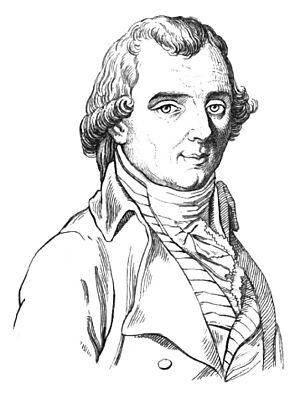Heinrich Wilhelm Olbers facts for kids
| 2 Pallas | March 28, 1802 |
| 4 Vesta | March 29, 1807 |
Heinrich Wilhelm Matthäus Olbers (born October 11, 1758, died March 2, 1840) was a very smart German scientist. He was an astronomer, meaning he studied stars, planets, and space. He also worked as a physician, helping people with their health, and was a physicist, someone who studies how the natural world works. Olbers is famous for discovering two important asteroids and for his work on comets.
Contents
Discovering Asteroids
Heinrich Olbers made a big splash in the world of astronomy by finding two new objects in space. These objects were asteroids. Asteroids are like small, rocky worlds that orbit the Sun, mostly found between Mars and Jupiter.
His first discovery was 2 Pallas on March 28, 1802. This was only the second asteroid ever found! The first one, 1 Ceres, had been discovered just a year earlier. Olbers then found his second asteroid, 4 Vesta, on March 29, 1807. Vesta is one of the brightest asteroids you can see from Earth without a telescope.
Olbers believed that asteroids might be pieces of a larger planet that broke apart. This idea helped other astronomers search for more of these space rocks.
Comet Hunter
Besides asteroids, Olbers was also very interested in comets. Comets are often called "dirty snowballs" because they are made of ice, dust, and rock. When they get close to the Sun, the ice melts, creating a bright tail.
Olbers discovered several comets during his lifetime. He also came up with a way to calculate the path of a comet using only three observations. This method was very helpful for astronomers at the time. It allowed them to predict where a comet would go and when it would be visible again.
Olbers' Paradox
Olbers is also known for something called "Olbers' Paradox." This is a question about why the night sky is dark. If the universe is endless and full of stars, then everywhere you look, you should see a star. This would make the night sky bright, not dark.
Olbers thought about this puzzle, and it made scientists think deeply about the size and age of the universe. Today, we know the night sky is dark because the universe is expanding, and light from very distant stars hasn't reached us yet. Also, the universe had a beginning, so it's not infinitely old.
His Life and Work
Heinrich Olbers was born in a town called Arbergen, which is now part of Bremen, Germany. Even though he studied medicine, his real passion was astronomy. He built his own observatory at his home and spent many nights observing the sky.
He was a very dedicated scientist and contributed a lot to our understanding of the solar system. His discoveries and ideas helped shape the field of astronomy in the 18th and 19th centuries.
Images for kids
See also
 In Spanish: Heinrich Olbers para niños
In Spanish: Heinrich Olbers para niños



